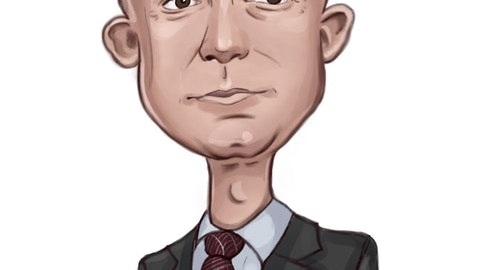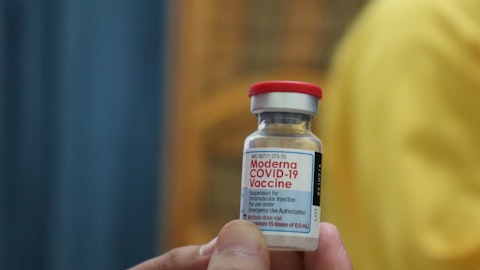For the last two decades, Invisalign has been gradually developing its name as the most predominant provider in the clear retainer space, and with a strong cause. This product is easily capable of treating a plethora of dental predicaments, and even more difficult issues that would have previously required orthodox braces.
It does all this, and also manages to be far more convenient and viable for the average person than more traditional options since it is removable. That being said, all these benefits come at a cost, and for Invisalign that typically ranges between $3,000-$8,000. For many people, this is a decent chunk of change, and the decision to engage in this type of treatment cannot be taken lightly. Analysts argue that consumers are more price sensitive, which they attribute to the recent poor performance of share prices.
Low demand in the abovementioned context relates to pricing, rather than a desire to use clear aligners. Against this backdrop, a number of providers have launched invisalign alternatives in recent years that are beginning to garner their own reputations and credit. This article will first provide an explanation of the distinction between the two types of aligner treatment, before engaging in an evaluation of some of the most popular alternatives to Invisalign, and who they are best suited for.
The Two Types of Aligners
The alternatives to Invisalign can be broadly categorized into two main groups: “in-office” and “at-home” aligners. These share many key characteristics (both being custom aligners pertinent to a particular patient’s dental arches that correct teeth over time) but differ slightly in their application, which can be gathered from the name.
Namely, the entirety of the treatment surrounding “at-home” aligners will take place remotely without the need for the patient to ever check in to an office. The primary benefit of this is that it allows a similarly high level of treatment to be provided at a fraction of the cost as it cuts out the most expensive part of this treatment: paying for the dentist’s time.
On top of that, it is also far more convenient for the majority to be able to treat their dental issues at home. Despite these benefits, there are necessary weaknesses associated with this approach. The most important one is that they won’t be as effective a treatment method as “in-office” retainers, meaning the latter will be required for more serious dental issues.
This is because, without the appointments with a dentist, the finer tweaks to the retainers (such as attachments or elastics) cannot be implemented into a patient’s treatment plan in order to treat more acute misalignments.
How This Industry Has Evolved
Following the founding of clear aligners in 1997 by Zia Chishti and Kelsey Worth, this industry has made many breakthrough technological developments. Prior to the creation of Invisalign by Align Technology, orthodontic patients were required to wear fixed braces made from metal and wire.
These static technologies were quickly overtaken by how dynamic Invisalign was, particularly as a replacement for the unremovable and unsightly traditional option for teeth correction. Finally, adults had a convenient means through which to straighten their teeth that they could choose whether to leave at home or not.
For a long time, the competition was precluded from entering the market as Invisalign patented its technology in order to remain ahead of competitors; it possessed a complete monopoly over this new and developing sector of orthodontics.
However, when this patent was eventually lifted, a number of new products sprung to life, with a number of creative and innovative reimaginations of what clear aligners can be. These spurred a further revolution in the industry that has now been realized as the option for patients to receive this treatment remotely with in-person or at-home treatments.
Each business in the market has its own take on this remote model, with some operating almost exclusively online while others implement a hybrid model that combines the benefits of at-home treatment with in-person checkups at dentist’s offices.
Ultimately this has resulted in a plethora of choices for consumers, who can now choose which company’s model suits their own individual needs and situations most optimally. Some of these alternatives to Invisalign have been outlined below.
Invisalign Alternatives
SmileDirectClub
SmileDirectClub was one of the first alternatives to arise following the lifting of Invisalign’s patent over the technology. Their take on this orthodontic instrument involves a hybrid treatment plan that utilizes dentists’ offices across the country. This means customers can largely access in-person treatment from home.
Byte
Byte is a more recent entrant to this market, having only been founded in 2018, that manufactures at-home aligners. They have focussed on primarily shortening the length of treatment associated with at-home clear aligners while maintaining the same standard.
Six Month Smiles
Six Month Smiles’s interpretation of clear aligner treatment blends the approaches taken by SmileDirectClub and Byte. Indeed, it provides treatment in a shorter timeframe than Invisalign while also granting patients access to office visits.
A Global Industry
In more than 150 countries clear aligner technology is being used. First of all, given economies of scale in taking over local markets, only pockets of the world where non-English speaking populations are too small to target, have been left out. In countries where a large portion of the population speaks the same language, for example Brazil, all of Latin America, Turkey, Japan – these countries are all brimming with dentists using various brands and solutions. Then of course, the entire English speaking world, including the U.S, Australia, Canada, UK and much of Africa represents a substantial market share.
Closing Remarks
Though Invisalign established dominance in the clear aligner market early on with its patent over the technology required for the production of this treatment, a number of strong contenders have risen in the last few years that challenge its supremacy.
The lifting of Invisalign’s patent has enabled different interpretations and visions for the clear aligner to flourish. This is ultimately only a positive development for consumers, who are now presented with a variety of different options to suit their individual needs.
If a customer requires the intensive treatment of Invisalign for serious dental misalignments, they can acquire it, though many other viable options also exist for those seeking shorter treatment for less serious conditions. As is the case in almost all industries, more choices (and the commensurate information) should always lead to better choices for the consumer.




